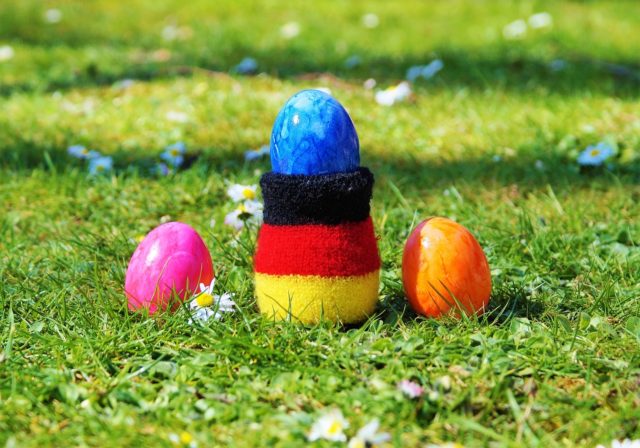Story and photos by U.S. Army Garrison Wiesbaden
Easter time is associated with the beginning of spring and new life in Germany. Several Easter traditions have to do with banishing the winter and welcoming spring.
However, before Easter Sunday, the church bells fall silent to remember the time of Christ’s suffering and death. According to the legend, they fly to Rome to be blessed by the Pope, but will be back the night before Easter Sunday to celebrate Christ’s resurrection.
On Good Friday, the Friday before Easter Sunday, many people in Germany abstain from meat and dancing and going out in commemoration of Jesus.
On Easter Sunday, the happiness comes back.
The Easter bunny, who delivers and hides colored and chocolate eggs, is a symbol for fertility and life, as are the eggs. First evidence of the Easter bunny tradition is dated back to the year 1682; it became popular in the nineteenth century.
Kids all over Germany enjoy searching for Easter eggs, sweets and little presents in their homes and the gardens.
Although throughout Germany, usually the Easter bunny delivers and hides colored eggs; in some parts of Germany, the Easter fox or the Easter rooster delivers the eggs. This tradition may originate in the custom of dyeing Easter eggs with onions or onion skins, which gives them a reddish-brown tint.
Many families also bake lamb-shaped cakes for Easter Sunday celebrations. The lamb stands for life, but also symbolizes Christ.
Adults may enjoy another German Easter tradition: Easter egg shooting. At a local shooting range, people shoot air rifles at small targets and win a colored egg every time they hit a target.
Easter fires have been a tradition in Germany for centuries. Traditionally, they can be found in Christian communities where people gather to light a big bonfire on the evening before Easter Sunday.
Easter in Germany is usually the time when many festivals and markets come back to life. It is the end of the Lenten season and the unofficial beginning of spring.
